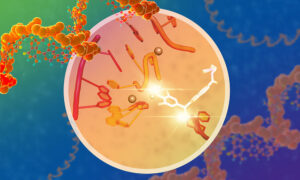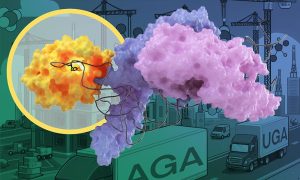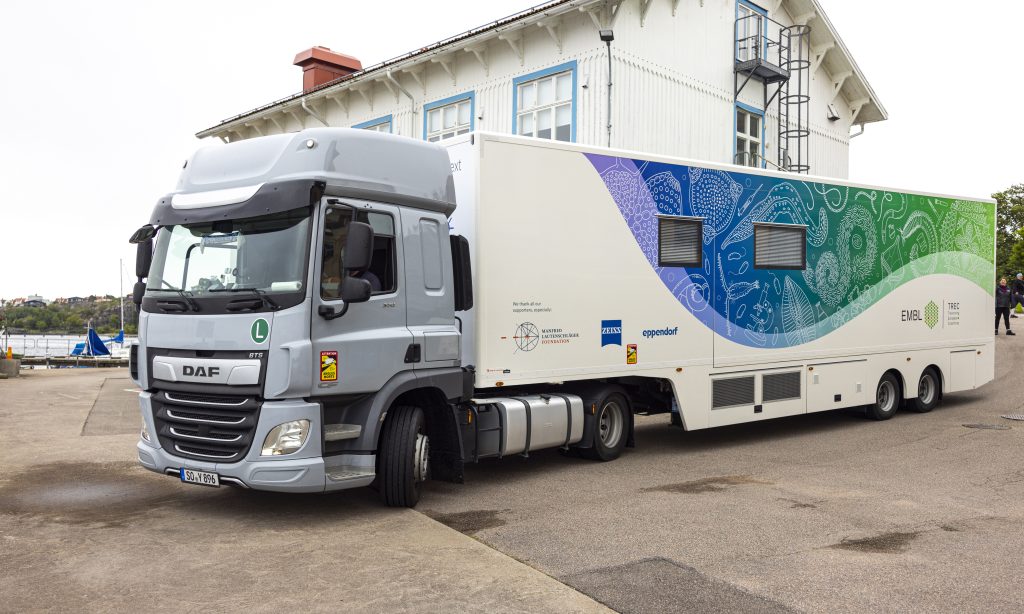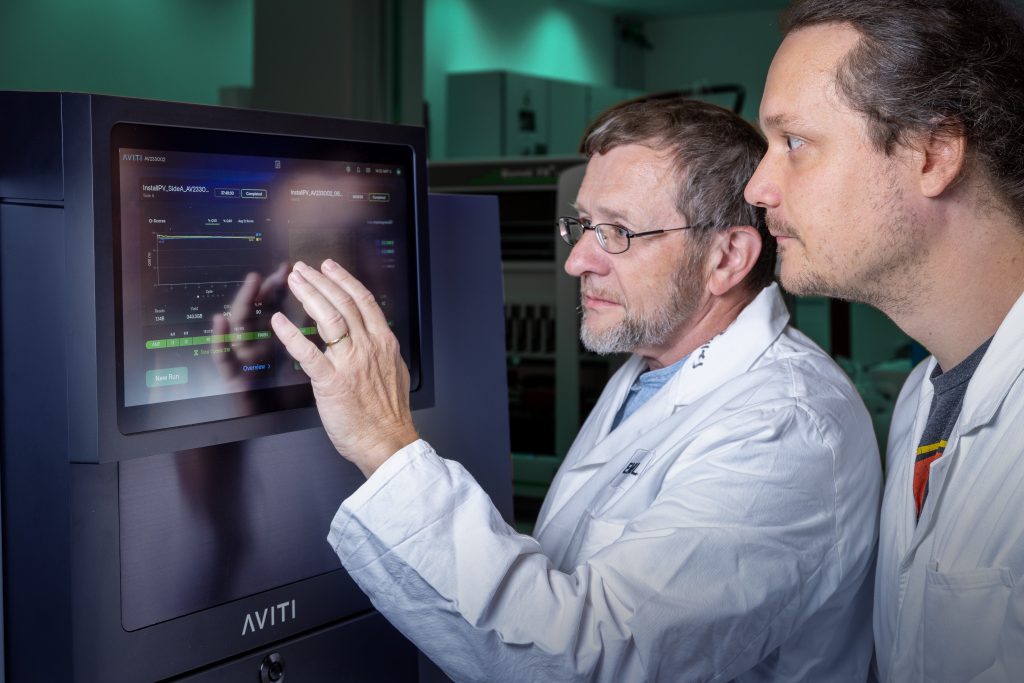Read the latest Issue
Protein production: going viral
Architecture of essential human transcription factor revealed
In a nutshell:
– The human TFIID is a large protein complex that forms the cornerstone of the machinery that controls the transcription of DNA into messenger RNA (mRNA)
– The core-complex of TFIID described here is made of 10 subunits organised symmetrically; that symmetry is broken when it attracts other subunits to start transcription
– Researchers mimicked the protein production strategy of Coronaviruses to produce and assemble the subunits of the core-complex of TFIID for high-resolution analysis
A research team of scientists from EMBL Grenoble and the IGBMC in Strasbourg, France, have, for the first time, described in molecular detail the architecture of the central scaffold of TFIID: the human protein complex essential for transcription from DNA to mRNA. The study, published today in Nature, opens new perspectives in the study of transcription and of the structure and mechanism of other large multi-protein assemblies involved in gene regulation.
By controlling the transcription of DNA into messenger RNA, TFIID forms the cornerstone of the machinery that controls gene expression in our cells. Despite its crucial role, very little was known about its architecture. TFIID is present at very low levels in cells, and it is a very large protein complex made of 20 subunits: this combination largely prevented previous attempts to purify it and decipher its structure and function in molecular detail. Even the most advanced methods for recombinant protein production met their limits when trying to produce its various subunits in the right proportions.
The solution to this bottleneck came from studying the strategy certain viruses, such as Coronaviruses, use when they replicate: they produce very long protein chains that are then divided into individual proteins. Mimicking this technique led to highly abundant and correctly assembled complexes of the core scaffold of TFIID (comprising 10 subunits), which could be purified and analysed at high resolution by combining electron microscopy and data from X-ray crystallography.
This ground-breaking analysis reveals the inner workings of the core-complex of human TFIID in unprecedented detail. It shows that some of its subunits adopt a very defined structure, whereas other parts appear to adopt intricate, extended geometries winding like worms through the complex, holding it together. The overall architecture of the complex is symmetric; however, the authors describe how it becomes asymmetric when it binds to other subunits to finally form the complete TFIID complex.
“We know now in some detail what the core of TFIID looks like, and what happens when further subunits are bound. We believe that we have opened the door to determining the architecture of the entire human TFIID complex in the near future, and likewise of other large multiprotein assemblies involved in gene regulation, and to explain their roles in catalysing biological function,” concludes Imre Berger, coordinator of the study at EMBL.
The study involved the research groups of Imre Berger and Christiane Schaffitzel at the EMBL Grenoble, and the research groups of Patrick Schultz and Laszlo Tora at the IGBMC in Strasbourg.
The video is also available on the EMBL YouTube Channel.







